
Paleozoic Seas
in the Ordovician and Silurian
from the Dinosaur Collector
update 12/27/06
The Ordovician period began approximately 510 million years ago and ended around 445 million years ago. A typical marine community consisted of including graptolites, trilobites, brachiopods, and the conodonts (early vertebrates), plus red and green algae, primitive fish, cephalopods, corals, crinoids, and gastropods.
Paleozoic Diorama More Diorama
Use the links below to see collector pages outside the Hell Creek series. Move your mouse over the pciture to find hot spots for more info.
Trilobites take off after the Cambrian diversifying peaking in the Ordovician then slowling declining to only a few species by the end of the Permian. Tthe Ordovician mass extinction, narrowed trilobite diversity. The decline seems to coincide with the presence of fish and sharks. No fossils are known after the Permian. Triarthrus eatoni was a trilobite common in Late Ordovician. In the juvenile stages, the trilobite was a planktonic suspension feeder. Afterward, the trilobite settled to live on or near the bottom as an epifaunal deposit feeder.
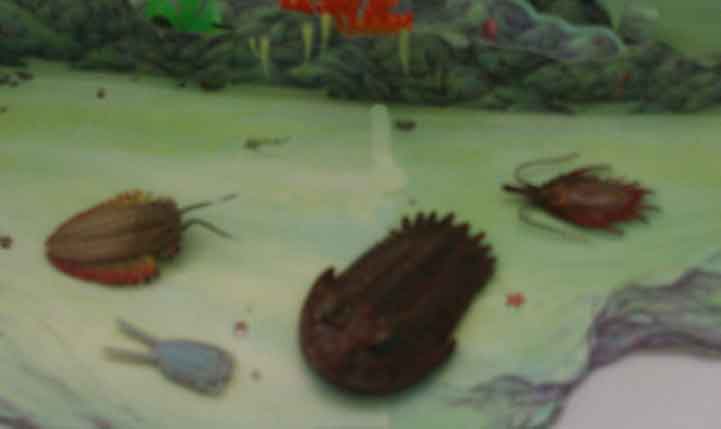 |
 |
The large Bullyland Trilobite from the Fossils series and two UHA figures. Imaginext Trilobite accessory. Dinotales UHA Triarthrus
The Silurian period from 443.7-416 Ma was a this period the first jawless fish developed. Coral reefs made their first appearance during this time, and the Silurian was also a remarkable time in the evolution of fishes. Not only does this time period mark the wide and rapid spread of jawless fish, but also the highly significant appearances of both the first known freshwater fish as well as the first fish with jaws. It is also at this time that our first good evidence of life on land is preserved, including relatives of spiders and centipedes, and also the earliest fossils of vascular plants. There is a theme that runs through the end of the Paleozoic the decline of the crinoids, brachiopods and trilobites.
Smithsonian Natural History Museum Silurian Diorama.
Late Silurian - Early Devonian: Climatius is representative of the acanthodians, spiny sharks characterized by diamond-shaped scales. Climatius was an active swimmer judging from its powerful caudal fin and abundant stabilizing fins, and probably preyed on other fish and crustaceans. Acanthodians were characterized by fins that are supported by heavy spines (much like the dorsal fins of some sharks, like Cladoselache). Pteraspis is a jawless fish had a protective armored plating covering the front of its body and feed shoals of plankton. Agnathan fish like Boreaspis and Belonaspis small, armored jawless fish with long snouts begin to be common.
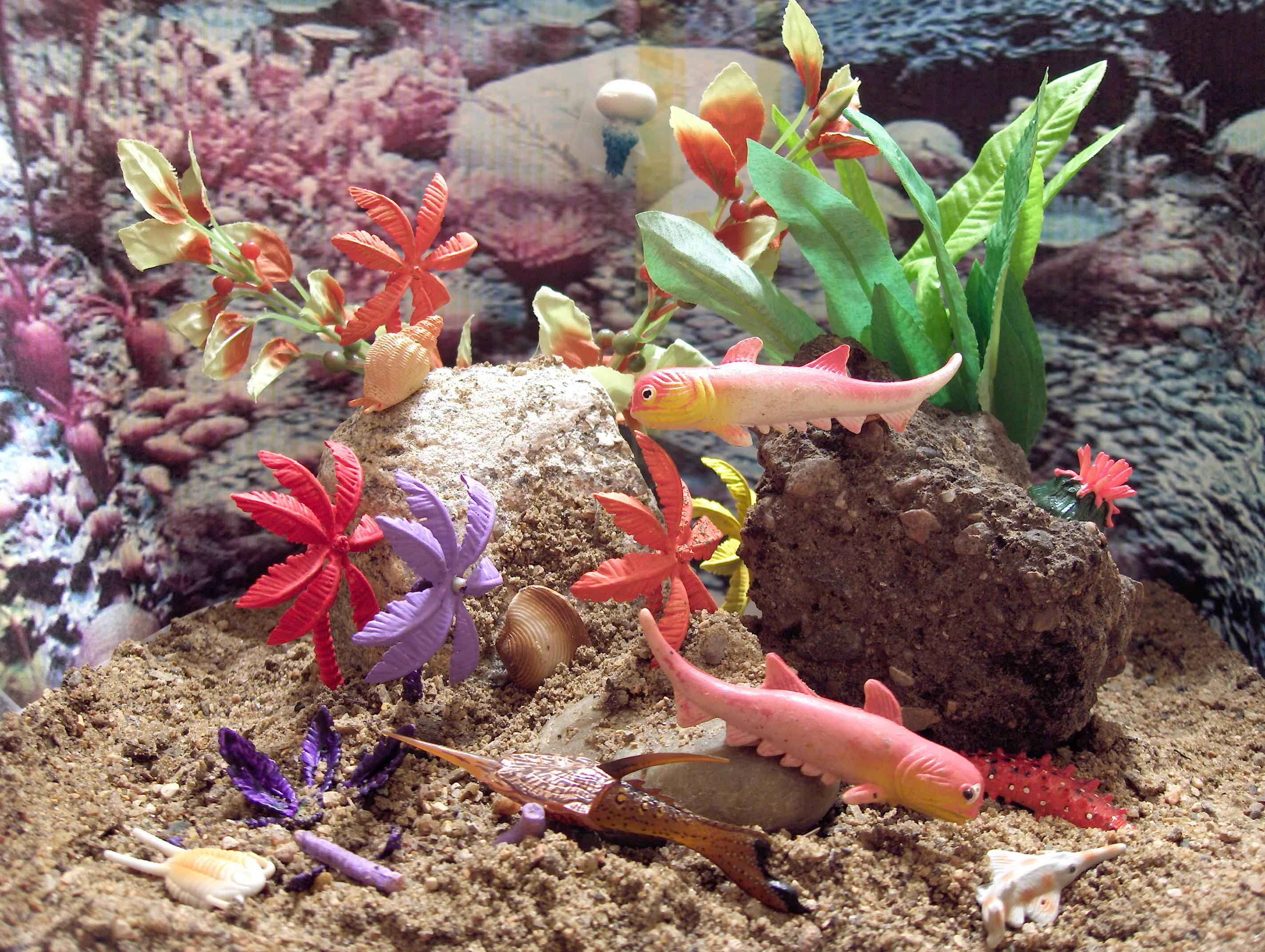
Diorama and photo by Sean Bell. Custom crinoids are reimagined palm trees from a game called
Siege. Trilobite from Imaginext, Ischyrhiza from Bullyland represents Boreaspis and the Pteraspis is from Kaiyodo UHA Dinotales. The Climatius figures come from a set of otherwise modern nameless bin figures.
The eurypterids were the largest known arthropods that ever lived. They are members of the extinct class Eurypterida and predate the earliest fishes. The largest, such as Pterygotus, reached 2 meters or more in length, but most species were less than 20 Centimetre. They were formidable predators that thrived in warm shallow water in the Cambrian to Permian from 510 to 248 million years ago. Eurypterus is perhaps the most well-known genus of eurypterid, of which 200 fossil species are known. Eurypterus remipes is the State Fossil of New York. It was a formidable predator on muddy sea floors that covered much of the eastern Appalachian Basin near the end of the Silurian Period, around 420 million years ago.
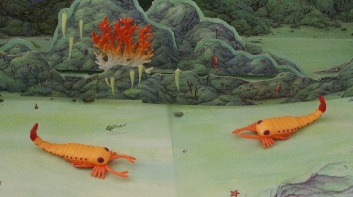 |
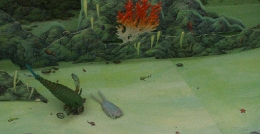 |
Cadbury Yowie Sea Scorpion. Eurypterus from UHA series 2 and a Imaginext Trilobite accessory.
Eurypterids were the most fearsome swimming predators of the Palaeozoic. Although called "sea scorpions", only the earliest ones were marine (most lived in brackish or freshwater), and they were not true scorpions. The move from the sea to fresh water probably occurred by the Pennsylvanian period. They the first animals to colonize the land.
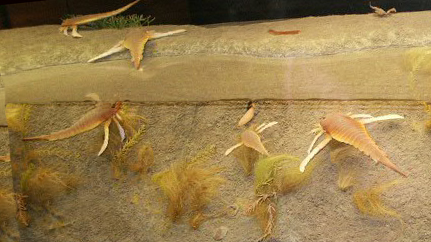
Smithsonian Natural History Museum Diorama.
Return Paleozoic Menu
 Use the Site A icon
to the new Dinosaur Collector for more Dioramas.
Use the Site A icon
to the new Dinosaur Collector for more Dioramas.
|
|